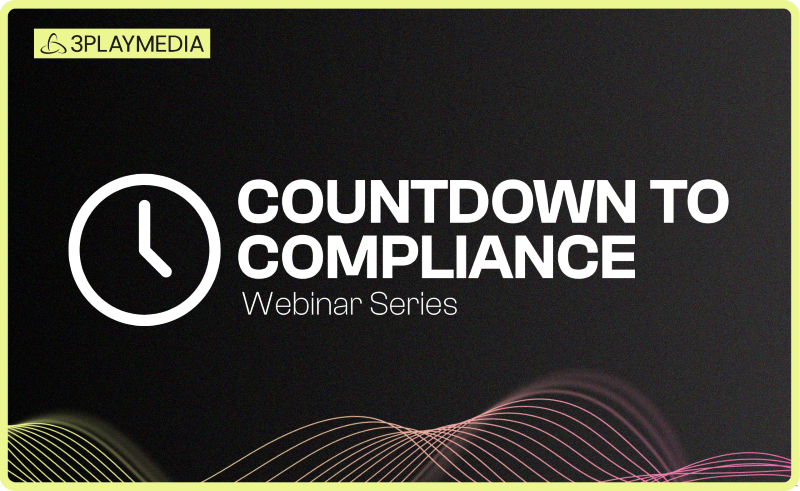- Captioning
Why Advocates Are Calling Out Closed Captions at Movie Theaters and Festivals
•
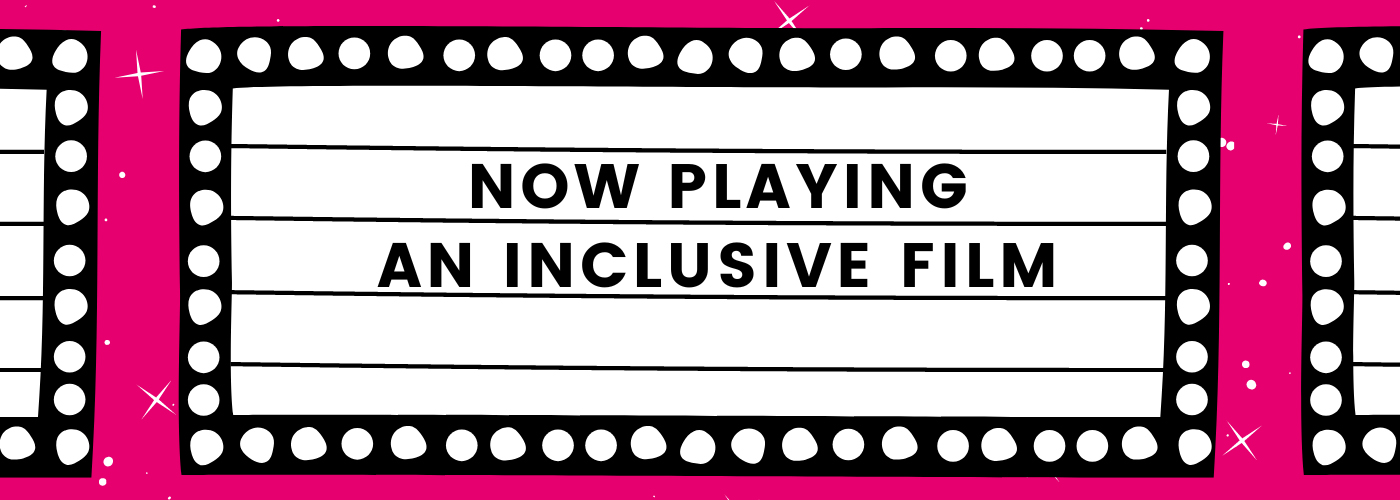
Download the [FREE] Checklist: Caption Reformatting
Open captioning is back in the forefront of accessibility advocates’ minds after Sundance Film Festival’s 2023 dramatic jurors Marlee Matlin, Jeremy O. Harris, and Eliza Hittman walked out of a film screening after Matlin’s closed captioning device malfunctioned and no other captioning alternatives were available to her and other d/Deaf and hard of hearing audience members.
Before this incident at Sundance, the issue of closed captioning at movie theaters and festivals had long been debated by filmmakers and viewers alike. Many in the d/Deaf and hard of hearing communities have called for film screenings to include permanent, burned-in open captions. The current closed captioning solution for film screenings relies on captioning devices, which are often plagued with technological and user experience issues.
But what exactly are open captions, and why are accessibility advocates passionate about adding them to films screened at movie theaters and festivals?
In this blog, we’ll discuss the current state of closed captions at movie theaters and festivals; why accessibility advocates are calling on the media and entertainment industry to move toward open captioning for films; and discuss artistic, cost, and audience loss concerns many filmmakers have about adding open captions to movies.
The State of Closed Captions at Movie Theaters and Film Festivals
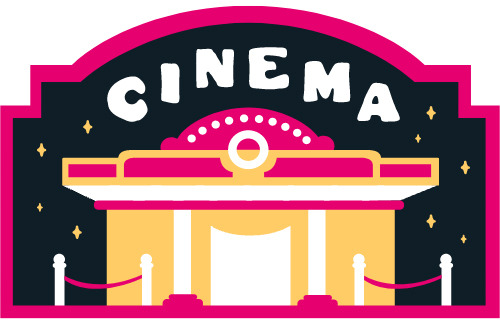
ADA Requirements for Movie Theaters
Movie theaters are required to provide and maintain closed captioning and audio description equipment for digital films that are produced with accessibility features, according to a Final Rule revising the Americans with Disabilities Act (ADA) Title III.
Additionally, theaters are required to provide notice to the public about the availability of accessibility features and ensure that staff is available to assist patrons with equipment.
How Movie Theater Closed Captioning Devices Work
The National Association of the Deaf (NAD) states that the two types of captioning equipment available in theaters are Sony Entertainment Access Glasses and CaptiView:
Sony Entertainment Access Glasses
Captions are transmitted to a wearable wireless receiver device, which viewers wear while watching a film. Captions appear overlaid on the screen through the lenses.
CaptiView
A small display with a flexible arm is attached to the arm of the seat or cupholder. Captions are transmitted to the device and appear on the display screen.
The Closed Captioning User Experience at Theaters and Festivals
Many accessibility advocates and people who use closed captioning find the user experience of captioning devices in their current state difficult. In the last year alone, multiple disabled people who use captioning devices have lamented the poor user experience of the current technology, including filmmaker Alison O’Daniel and advocate Shari Eberts.
To get further insight into the captioning issues at movie theaters and film festivals, we chatted with Matt Lauterbach, a filmmaker and accessibility advocate who founded All Senses Go and serves as ReelAbilities Film Festival Co-Director in Chicago.
Lauterbach said that “a lot of what’s happening is intentions that aren’t yet matched by an understanding of what’s involved” when it comes to accessibility at film festivals and movie theaters. He noted that filmmakers generally want to reach a universal audience and be accessible to all but are facing technological and procedural constraints to get to the point where films are truly accessible. In the meantime, closed captions remain a way for filmmakers and theaters to provide a compliant solution without taking a “visible stand” on the issue.
Lauterbach works with many filmmakers and caption users who support the use of open captions over closed captioning devices in movie theaters and film festivals. He explained that captioning technology can be cognitively draining, straining on the eyes, and even cause users to miss content in screenings due to the need to look back and forth from a device to the screen. “It’s a tough user experience,” he said.
Besides the user experience, Lauterbach also noted some basic technological functions in captioning devices that are prone to disrupt users.
“The device needs to be set to the proper theater,” he said. “You might get a caption device set to theater 7, and it’s set to theater 6. You then need to bring it back to get it fixed [during the movie]. That’s tough.”
On top of incorrect theater settings, dead batteries and uncharged devices are a common issue, not to mention theater and festival staff who aren’t trained on how to use or troubleshoot captioning devices.
Why Accessibility Advocates Want Open Captions
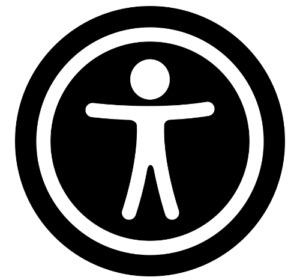
When it comes to captioning at movie theaters and film festivals, many accessibility advocates and disabled users have aligned on adding open captioning to all screenings. Open captions, similar to burned-in SDH subtitles, provide a permanently accessible way to view dialogue and sound effects on screen. Advocates prefer open captions over closed captions for film screenings due to their more inclusive user experience.
According to Variety, many international film festivals, including Cannes and Venice, already include open captions or subtitles in multiple languages on the screen, and Sundance’s 2023 dramatic jury “repeatedly expressed concerns to both Sundance and filmmakers that movies playing at this year’s festival should come with open captions.”
Open captioning for movies has become more mainstream in the last few years, with some theaters and filmmakers adopting the practice to make films more inclusive for d/Deaf and hard of hearing viewers:
- In 2021, AMC Theatres added open captioning to select showings in over 100 U.S. markets.
- Also in 2021, Minneapolis-based independent movie theater St. Anthony Main Theatre became the first cinema in the U.S. to provide open captions on all of its screenings before it changed ownership and replaced open captioning with closed captioning devices the following year.
- In 2022, Best Picture winner CODA was distributed with open captions for its theatrical release, which Matlin noted was done to ensure inclusion for all.
- Several lawmakers across the U.S. have also introduced or passed bills requiring theaters to provide open captioning on a portion of screenings in places like the District of Columbia, New York City, Hawaii, and Delaware.
Do you need to update your existing caption files? 👀
Filmmakers’ Concerns About Open Captions
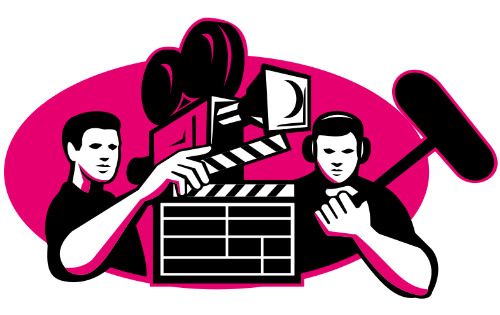
The enormous progress being made with accessible film experiences at movie theaters and festivals has not come without pushback. Some filmmakers and viewers find open captions to be too costly or distracting. Even Lauterbach admits that there are “legitimate artistic concerns” when it comes to open captions on films.
Some creators, particularly disabled filmmakers, strongly believe in the benefits of open captioning and make it part of their art rather than an obligatory element. For example, filmmaker Alison O’Daniel’s 2023 Sundance debut, The Tuba Thieves, includes open captions specifically crafted to be part of the art itself. Additionally, the use of certain types of SDH subtitles can support numerous customizations so that filmmakers and producers can curate the look and feel of the subtitles to align with a film’s other artistic elements.
For filmmakers with open captioning concerns, the issue is less about intentional exclusion and rather one about production costs and viewer experience. But are these concerns legitimate?
Cost
The issue of cost for the creation of an open-captioned print of a film is often cited by filmmakers as a barrier to offering open captions. Regarding the most recent incident at Sundance, several filmmakers reportedly brought up concerns about costs and time associated with the creation of an open-captioned film print, in addition to fears that burned-in captions could negatively impact a film’s asking prices for distribution.
In response, Lauterbach said that the Digital Cinema Package (DCP), a collection of files that includes caption formats used at film festivals and theaters, can actually be formatted as both closed and open captions without a need for additional quality control or much of a difference in overall cost. When a captioner creates a DCP caption file, it’s a matter of toggling settings on and off via the DCP.
If a filmmaker is not utilizing DCP specs, it can be a different matter in terms of time and cost. For example, a festival or theater may require different exports, which can add complexity to the open captioning or SDH subtitling process. Still, if a film is closed captioned, it can easily be reformatted to an open-captioned or SDH-subtitled version, regardless of export.
Many accessibility advocates say that the cost of not including a major group of people is greater than the cost of adding open captions or subtitles to film screenings because of the enormous segment of consumers being excluded. The U.S. d/Deaf, hard of hearing, and hearing loss communities consist of over 30 million people. Plus, millions of non-native English speakers, neurodivergent audiences, and viewers who prefer media with captions turned on make up additional viewing groups who have helped fuel the unprecedented usage of captions in recent years.
Audience Loss
Another commonly cited issue around open captioning surrounds the loss of audience over having permanent captions or subtitles on the screen. Lauterbach did not want to dismiss these concerns but noted that having open captions does not guarantee audiences will have a bad viewing experience.
A recent Preply study in the U.S. found that only 22% of viewers find subtitles more distracting than helpful, from which it can be inferred that over three-quarters of potential viewers don’t find subtitles distracting. The study also found that:
- 74% of viewers say subtitles help them comprehend the plot.
- 68% say subtitles help hold their attention on the screen.
- 55% say they often have to rewind after missing things said when they don’t use subtitles.
Lauterbach added that while he is not disabled, he is a dedicated caption user due to captions helping reinforce characters’ names, clarifying dialogue, and bringing to light other elements you can miss during a viewing.
Making Movies More Accessible
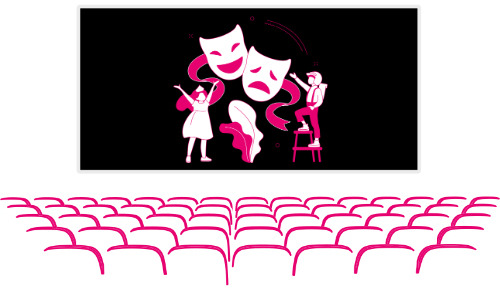
As the news cycle moves beyond the renewed calls for open captioning at movie theaters and film festivals, the question remains: How can venues and creators ensure films are inclusive and accessible to all?
At 3Play Media, accessibility is always on our minds. We want to help filmmakers learn about the benefits and limitations of closed and open captioning so they can make an informed decision about what kind of service is best for them.
3Play has a robust offering of closed captioning, open captioning, and SDH subtitling services designed to give cinematic content creators peace of mind when it comes to films screened at movie theaters, festivals, streaming platforms, or broadcast television. Whether you are submitting a film and require Simple DCP specifications or you want a curated, customized experience for your film’s SDH subtitles, 3Play will help you build accessibility into the process for a future-proof solution that is inclusive to all audiences.
About the author
Share this page
Related Posts
-
 Read more: A University Guide to Budgeting and Auditing for ADA Video Compliance
Read more: A University Guide to Budgeting and Auditing for ADA Video Compliance- Legislation & Compliance
A University Guide to Budgeting and Auditing for ADA Video Compliance
-
 Read more: Everything to Know About the Americans with Disabilities Act (ADA) and Video Compliance
Read more: Everything to Know About the Americans with Disabilities Act (ADA) and Video Compliance- Legislation & Compliance
Everything to Know About the Americans with Disabilities Act (ADA) and Video Compliance
-
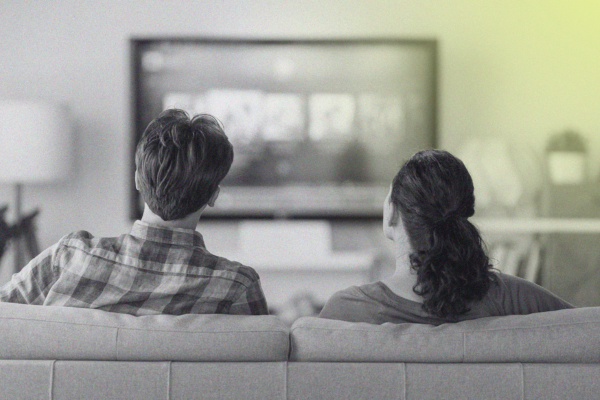 Read more: Subtitling vs. Dubbing: Which is Right for Your Audience?
Read more: Subtitling vs. Dubbing: Which is Right for Your Audience?- Subtitling
Subtitling vs. Dubbing: Which is Right for Your Audience?


